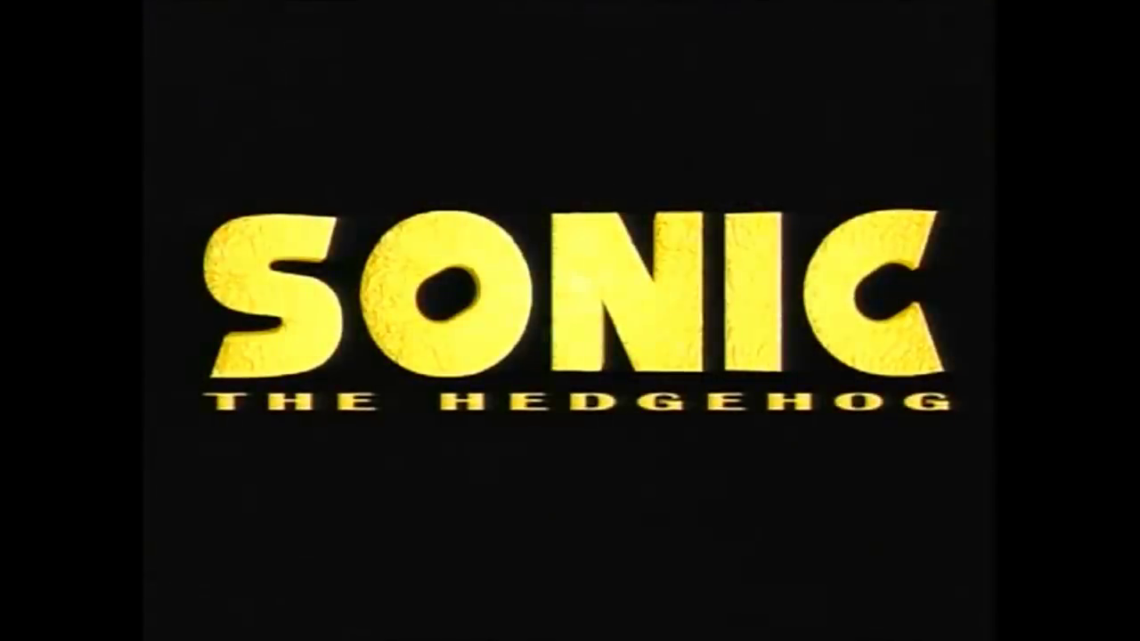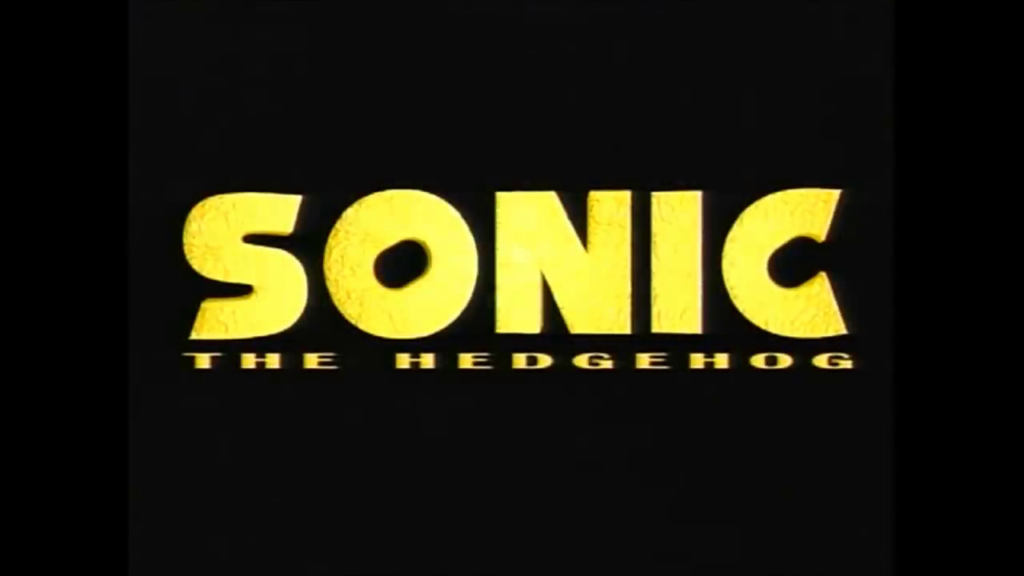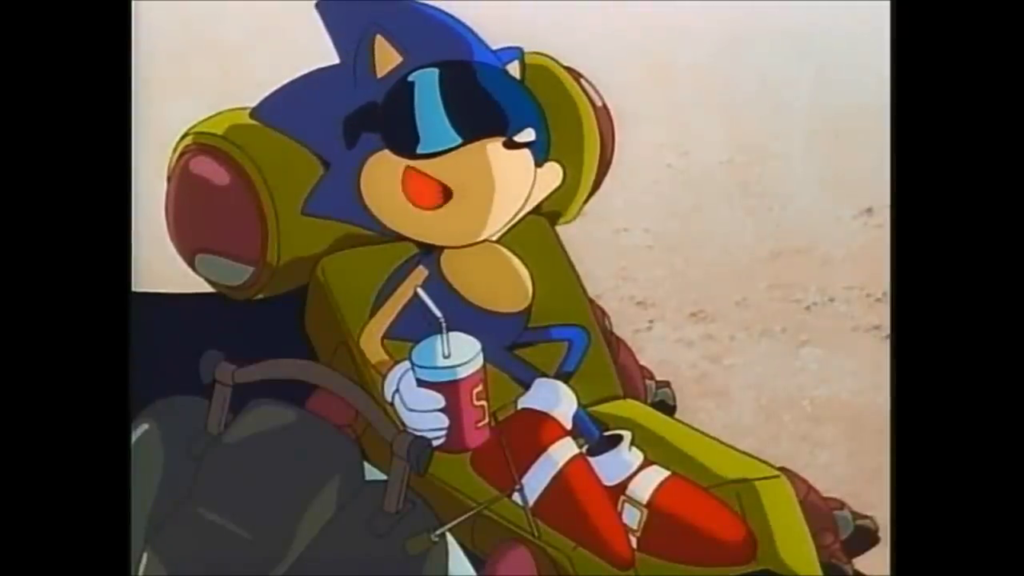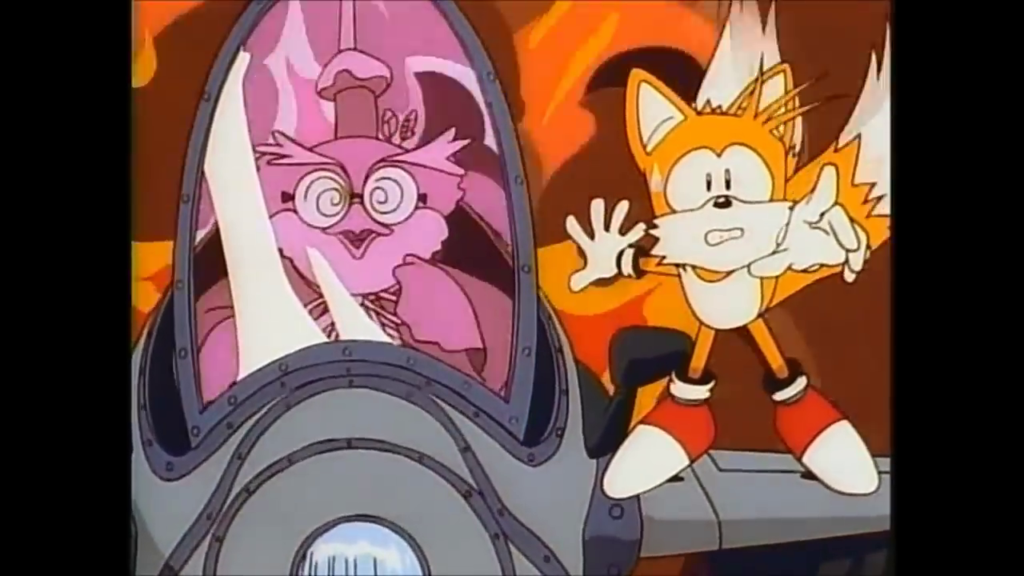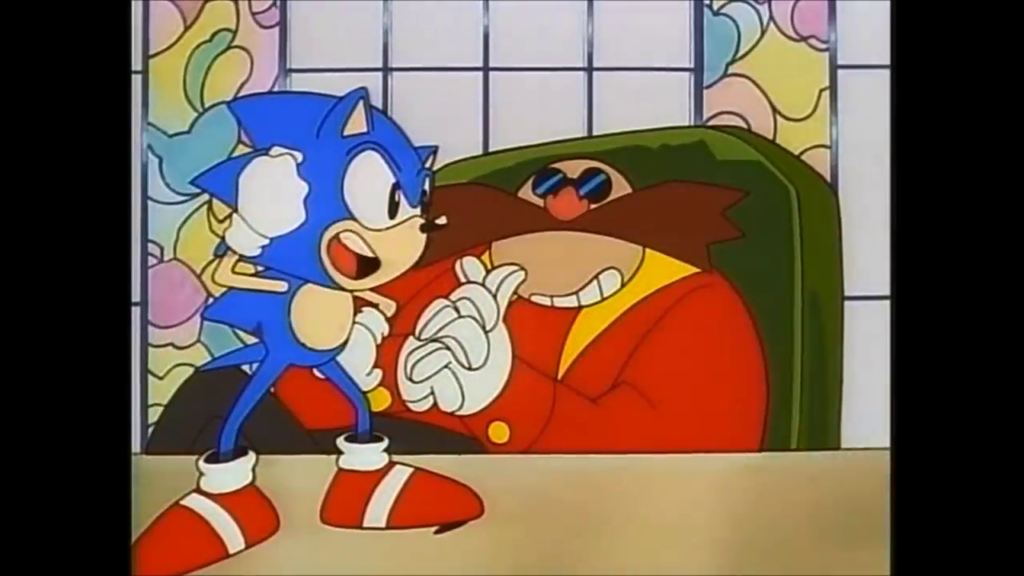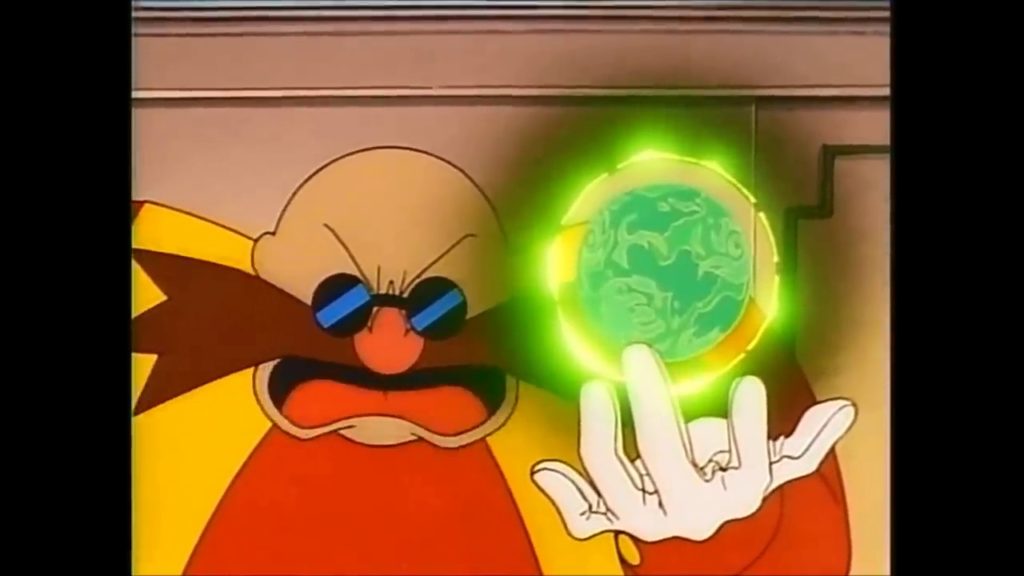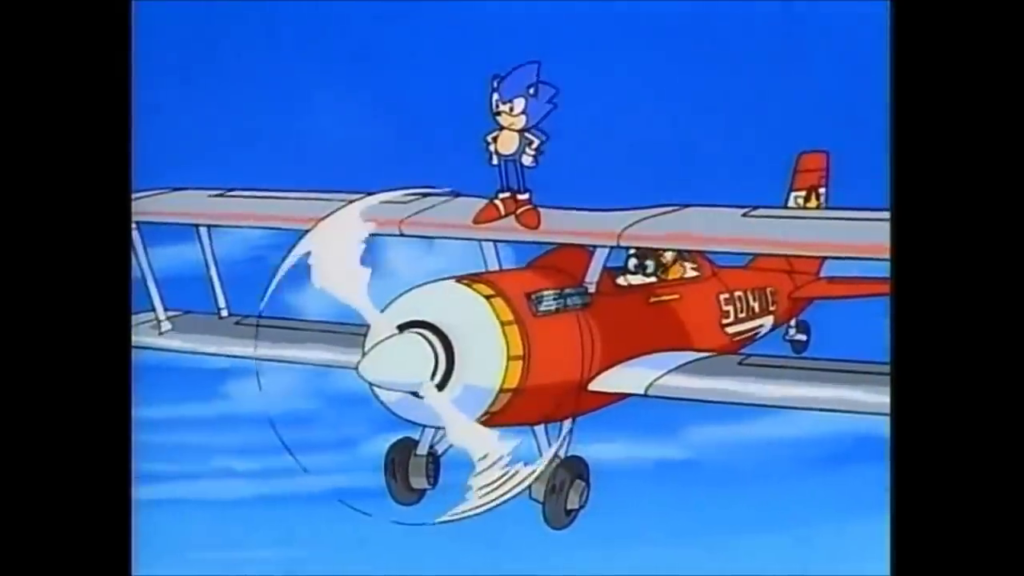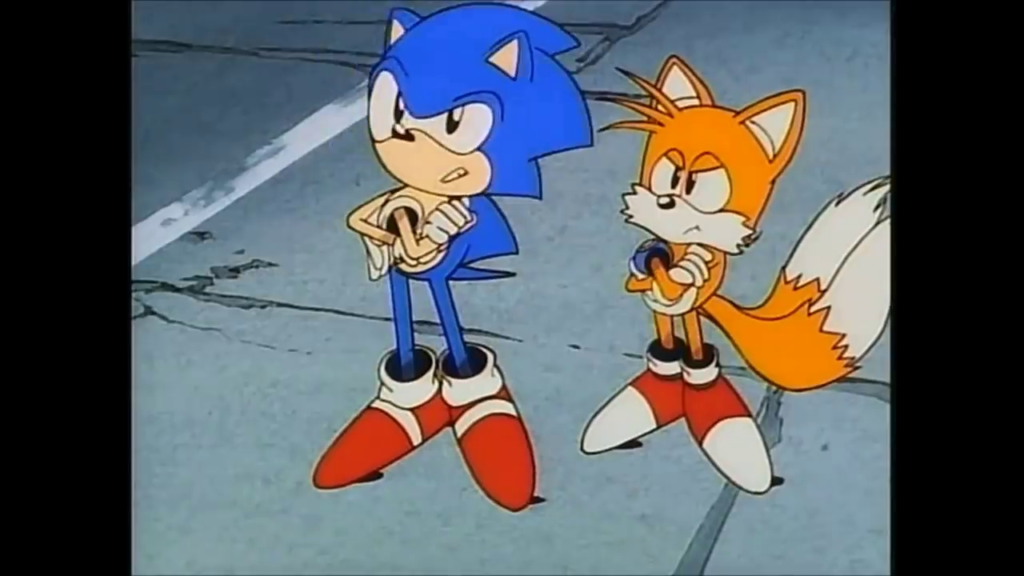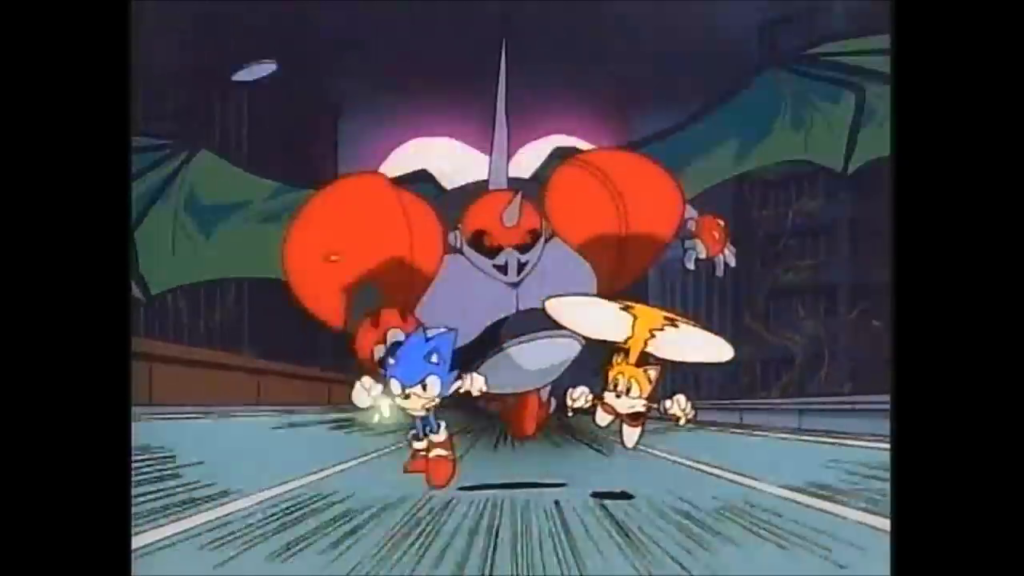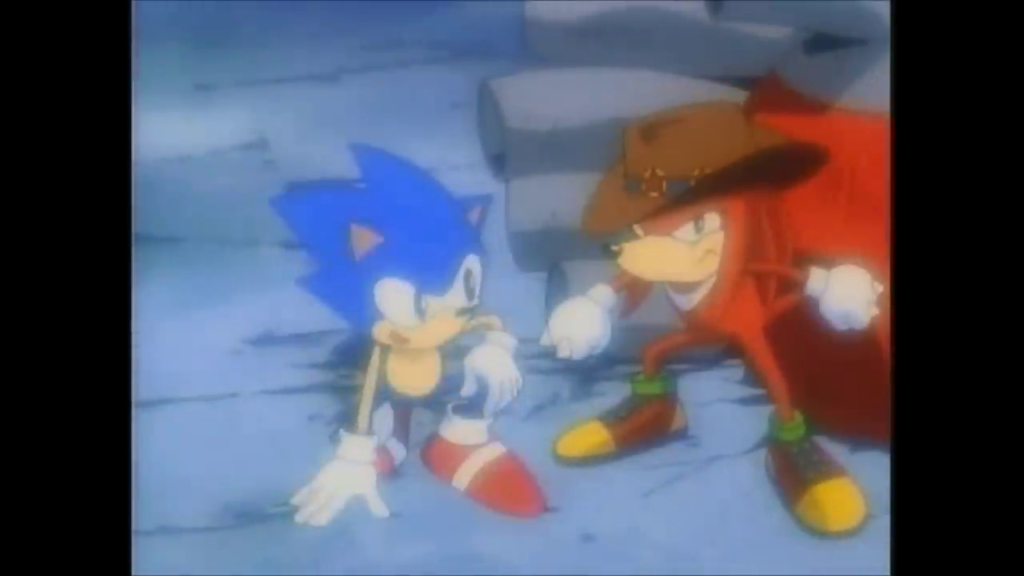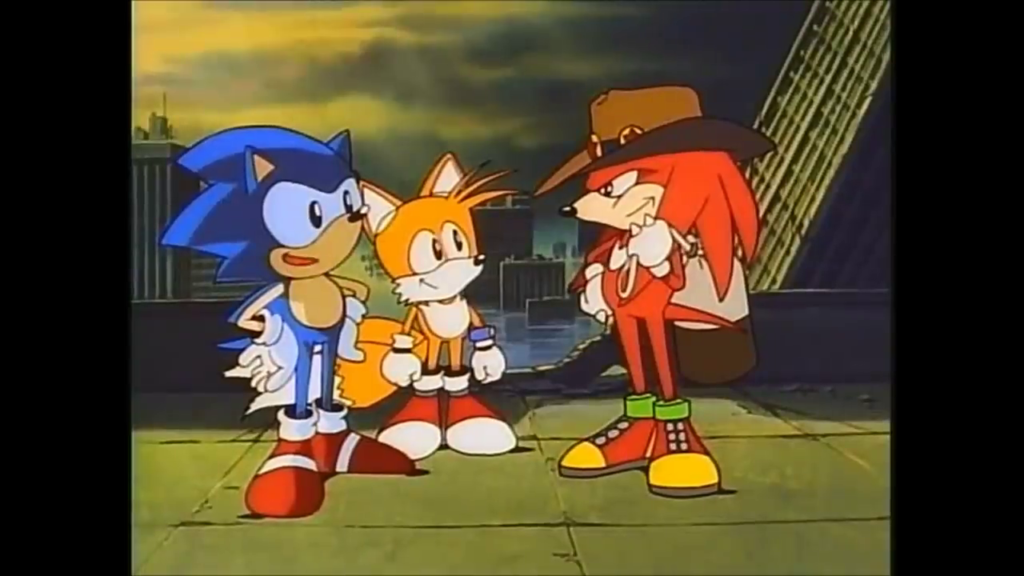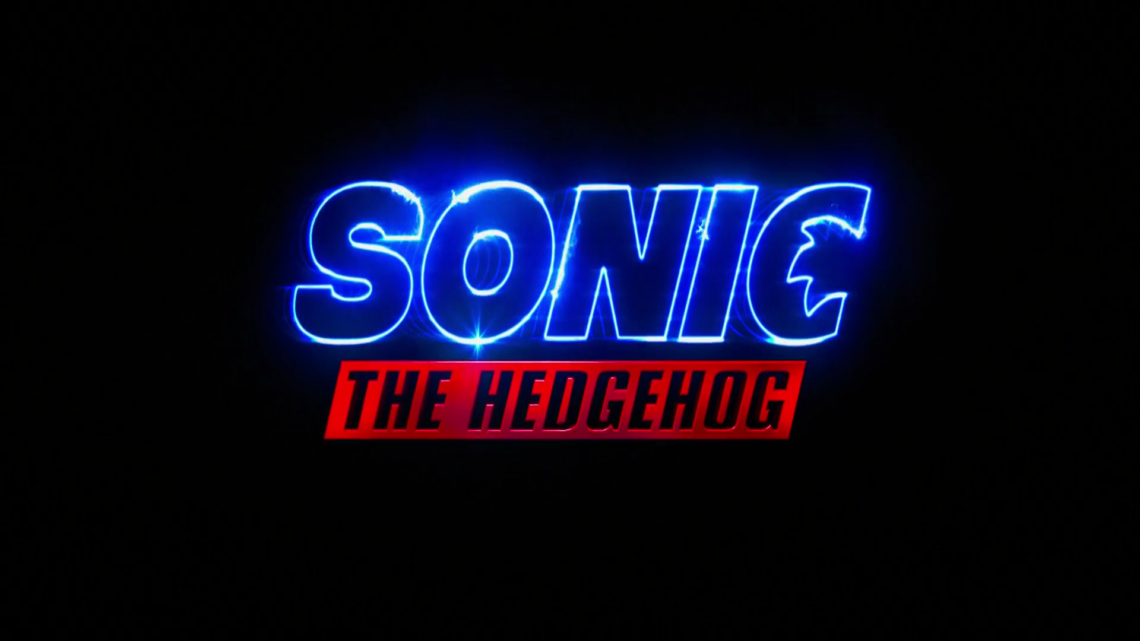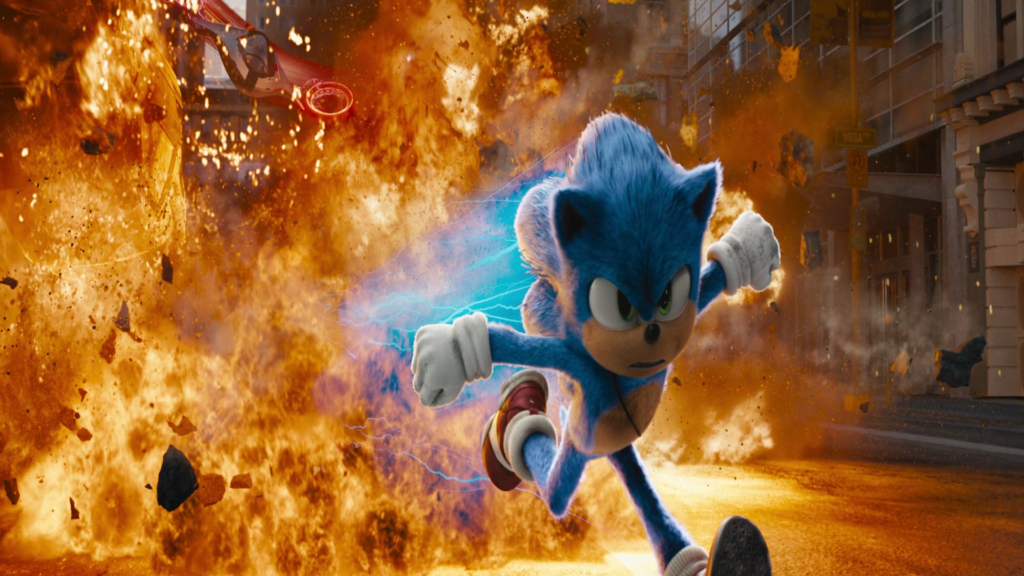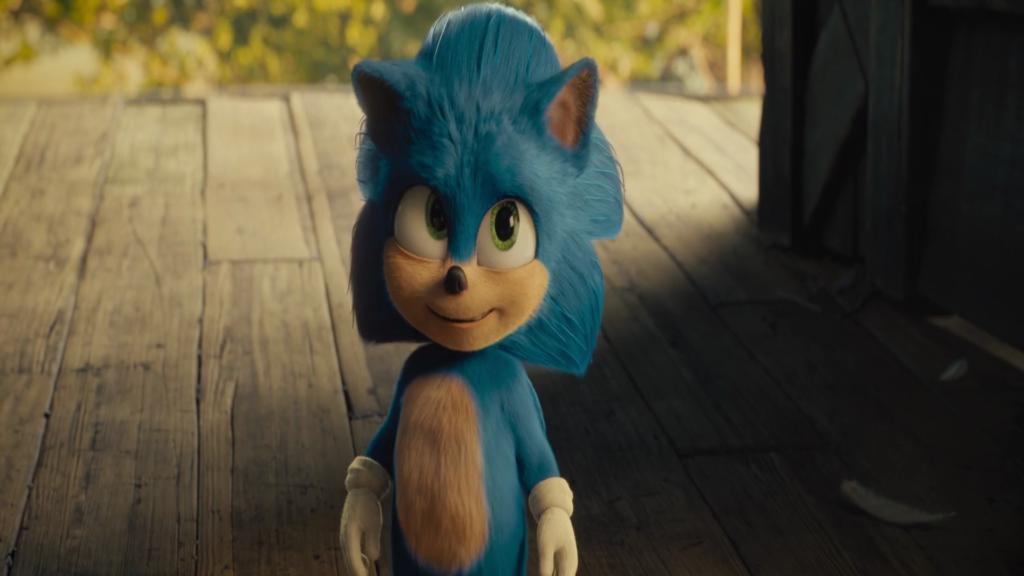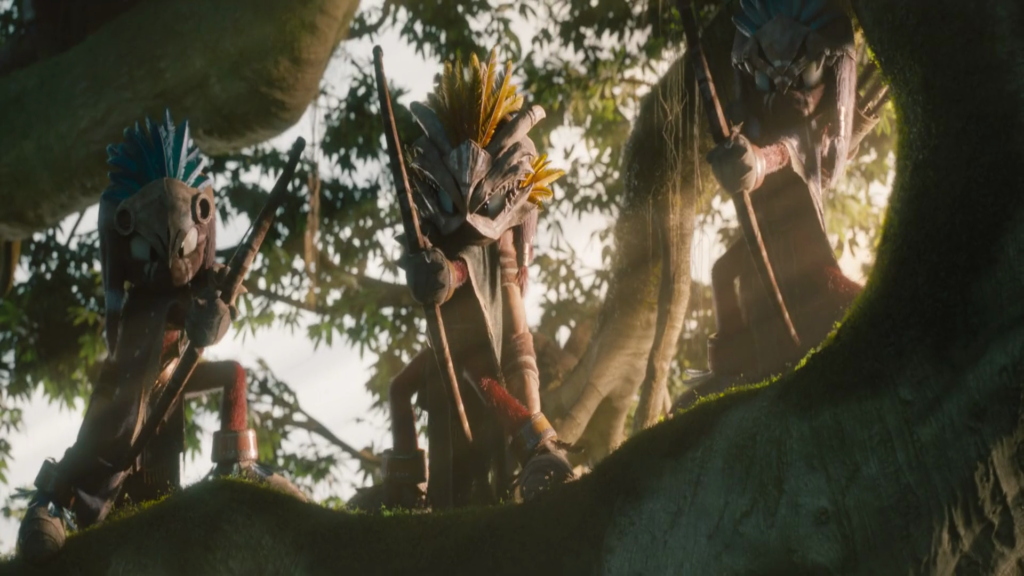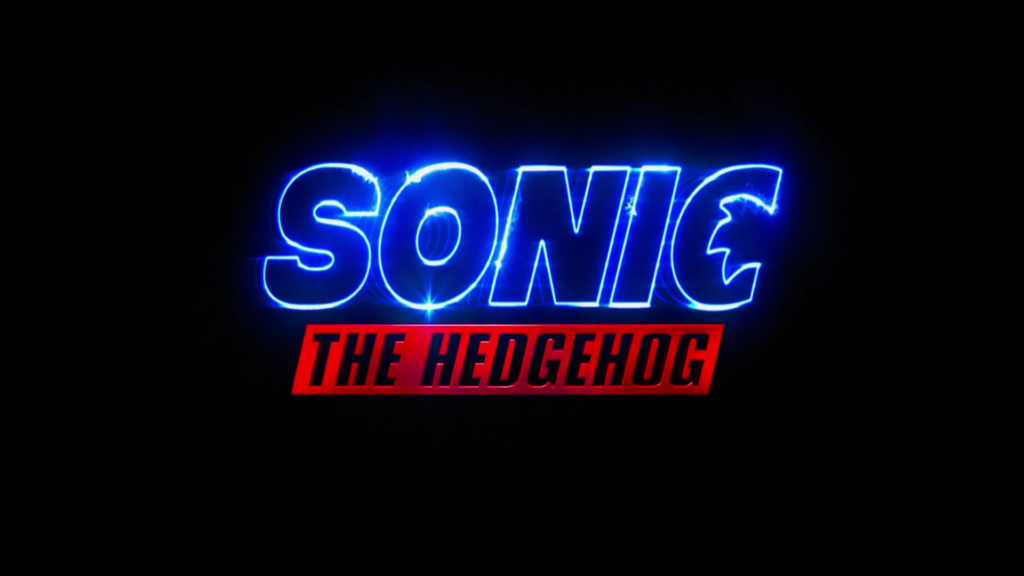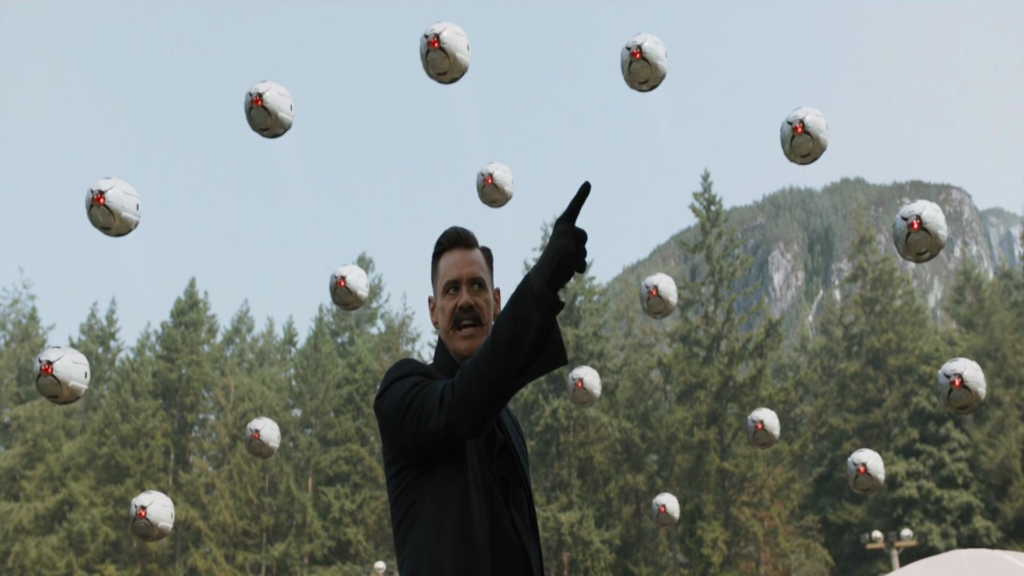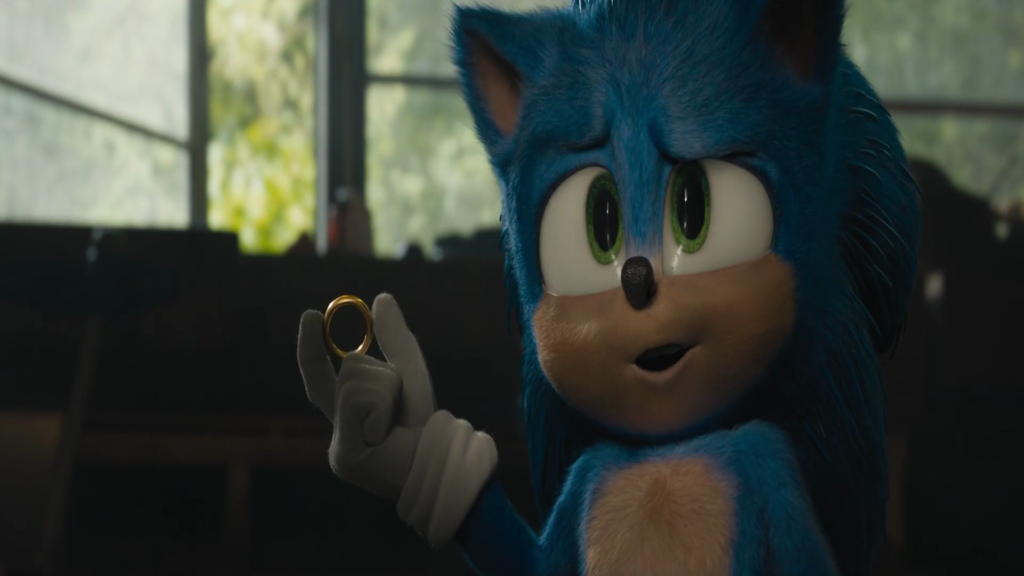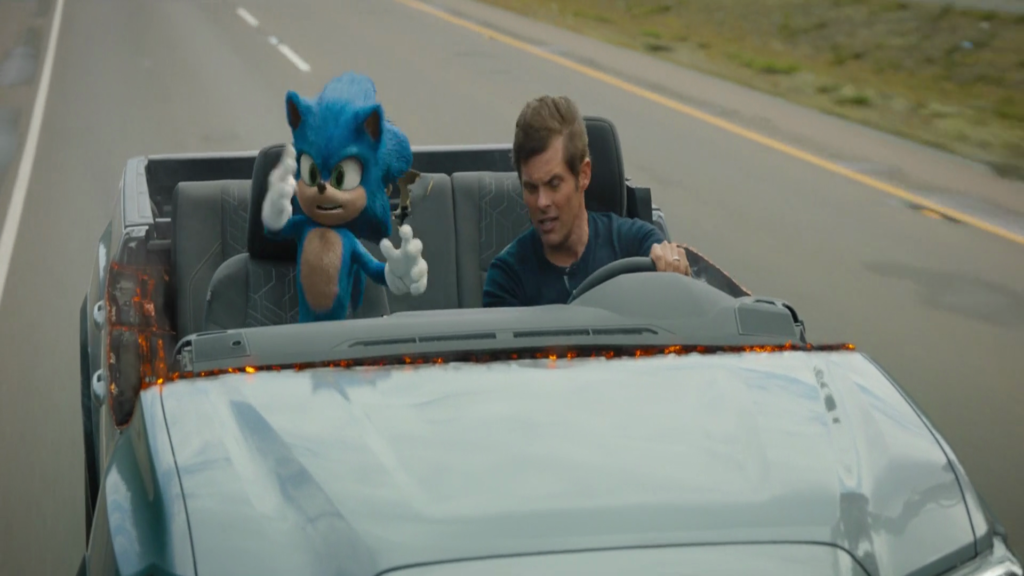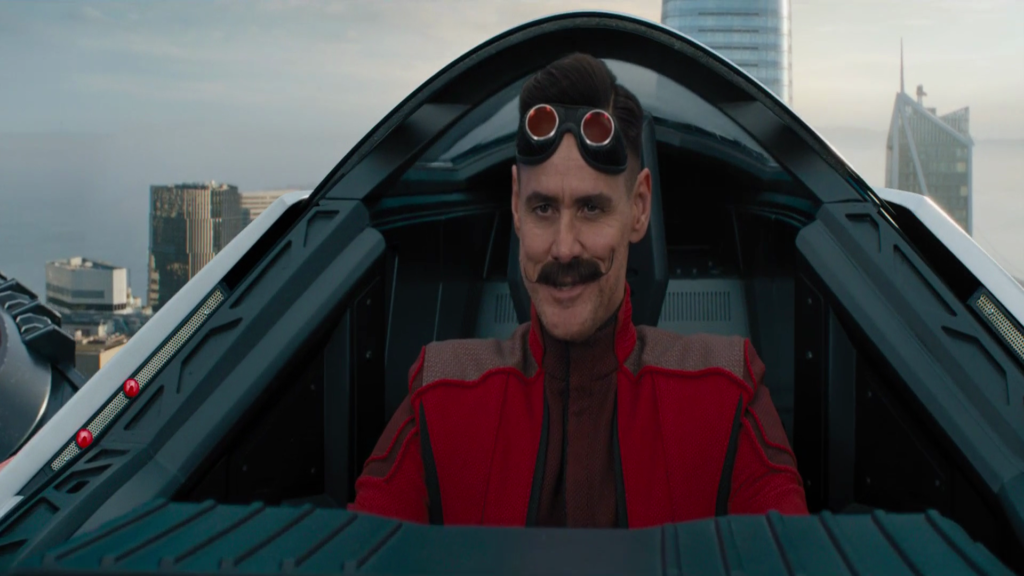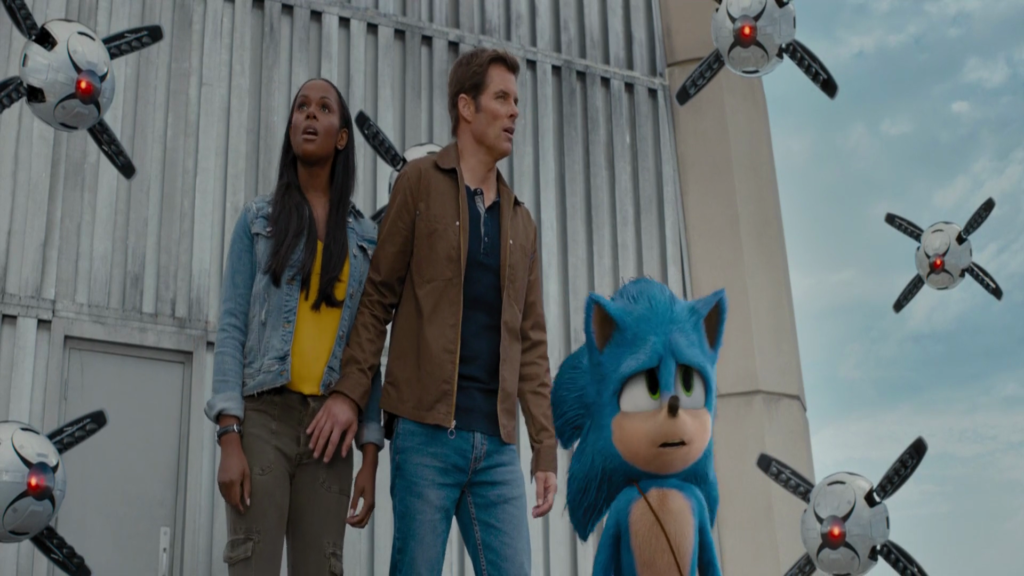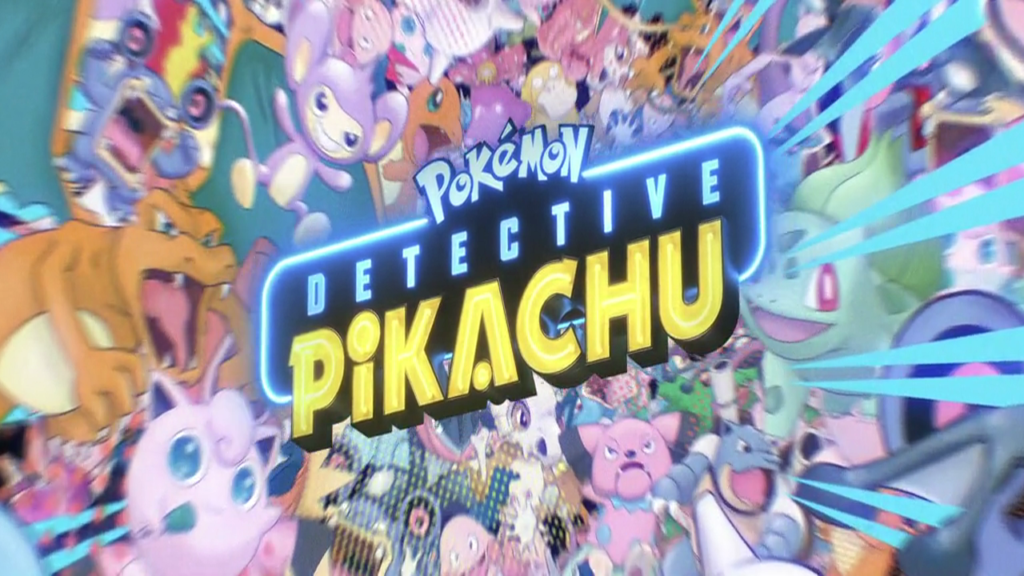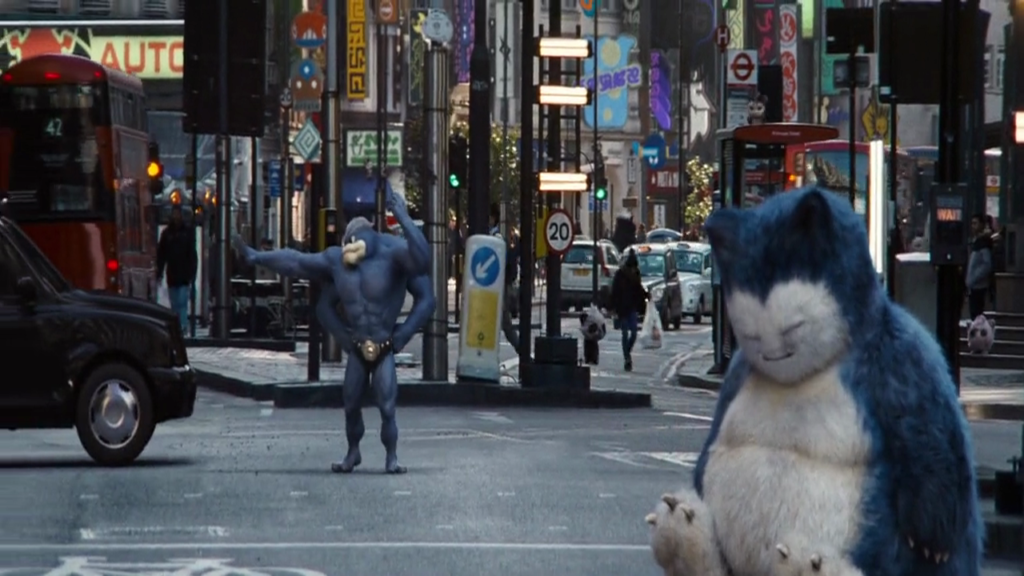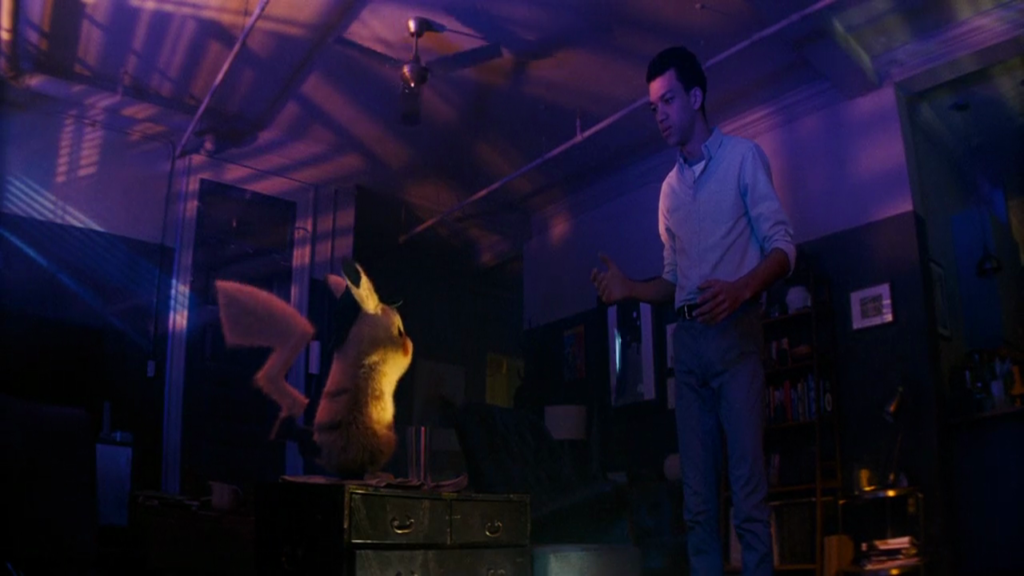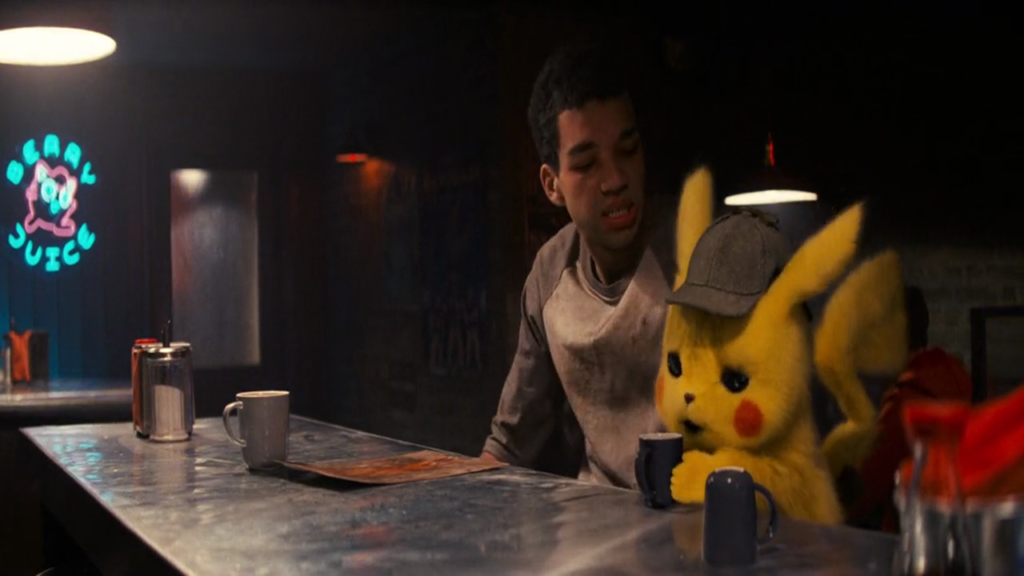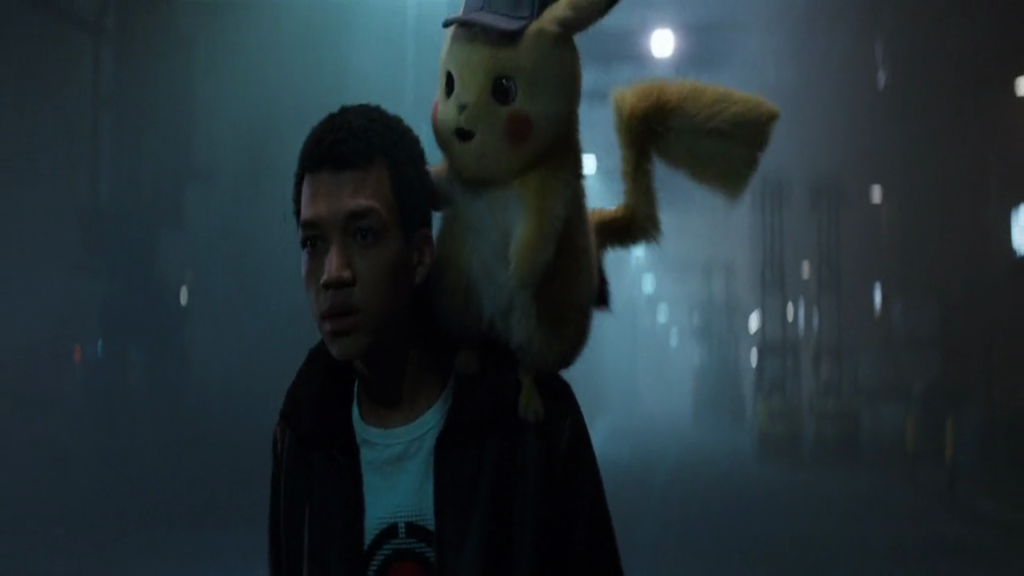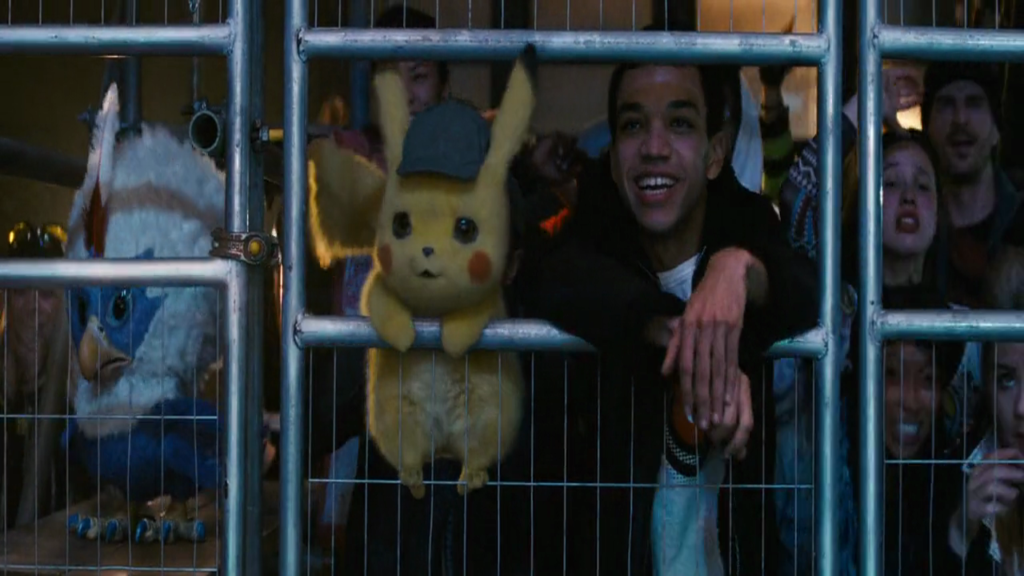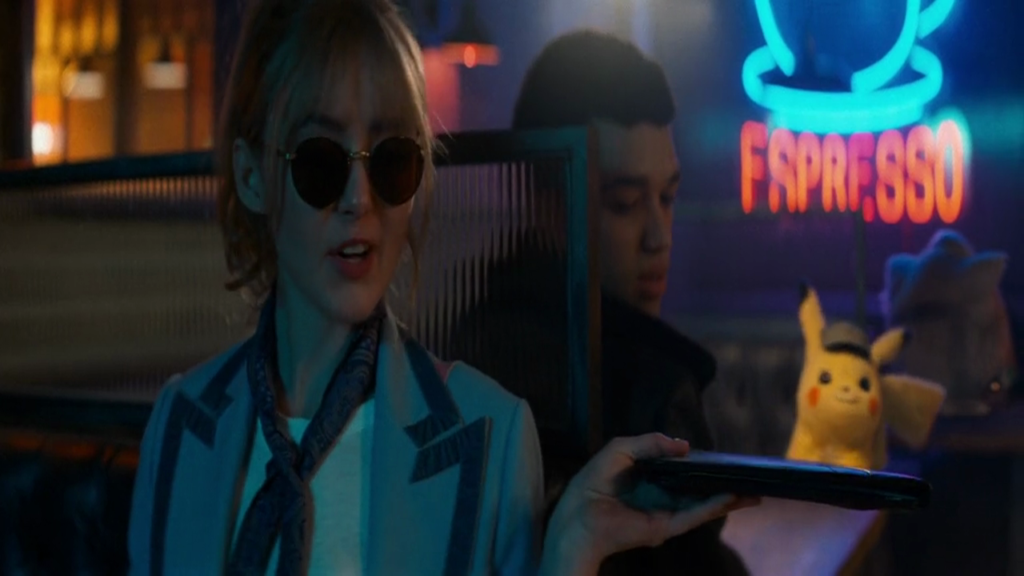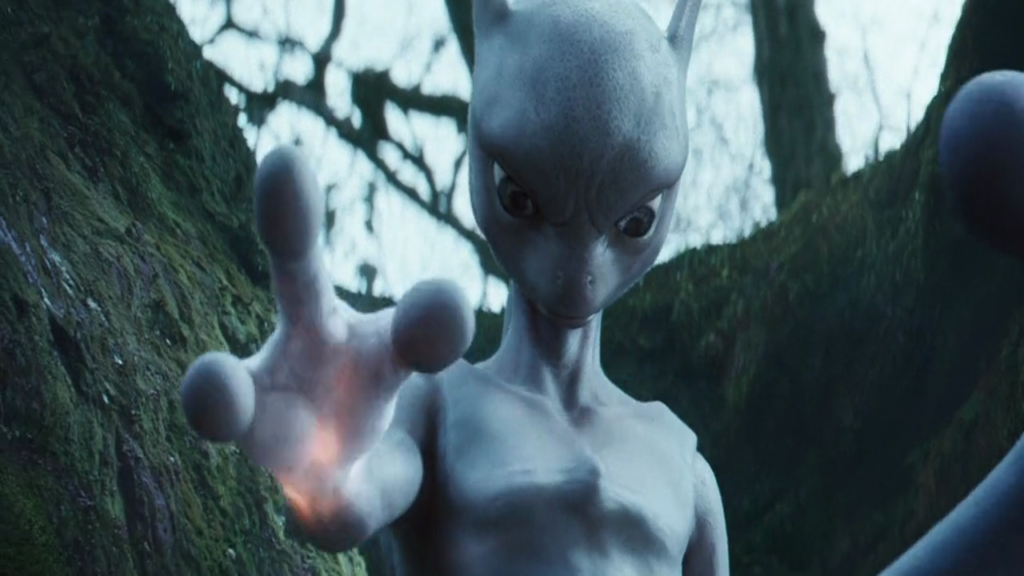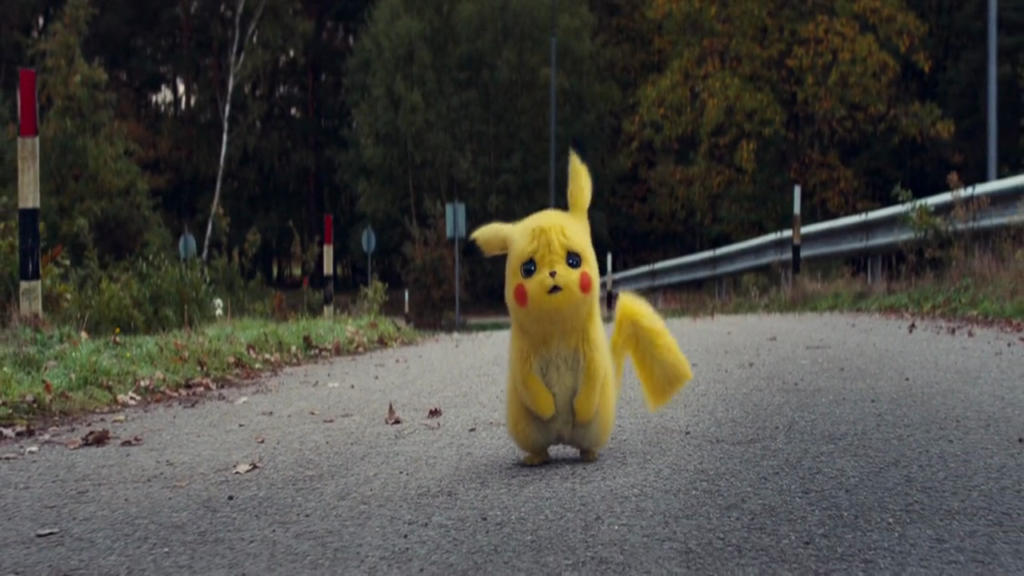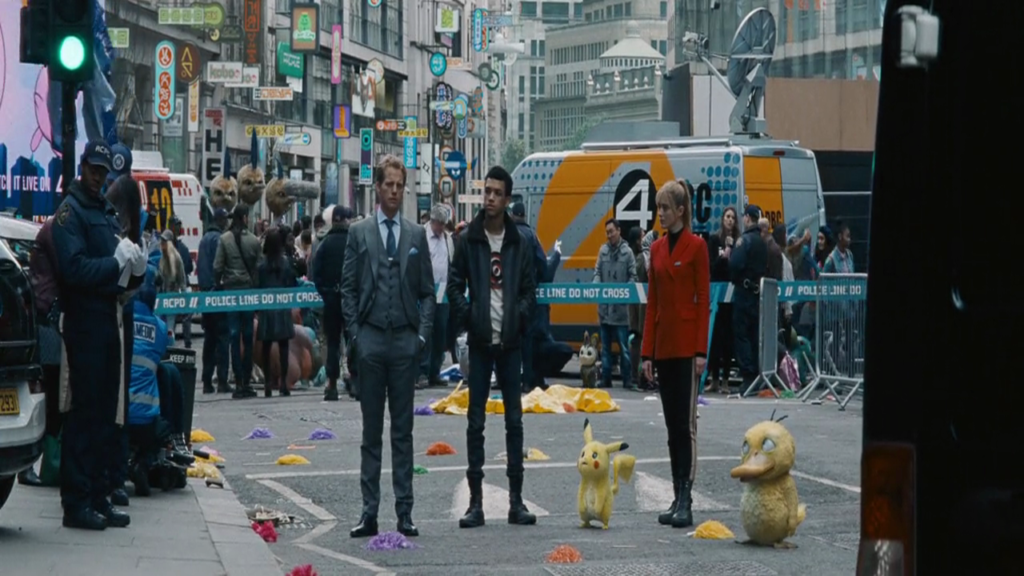-
#401 – Sonic the Hedgehog (1996)
Sonic the Hedgehog (1996)
Film review #401
Director: Kazunori Ikegami
SYNOPSIS: Sonic the Hedgehog is visited with an urgent message from the President of Planet Freedom. When he goes to visit him, Sonic finds none other than his arch nemesis Dr. Robotnik, who actually wants Sonic’s help in destroying Metal Robotnik, a robot who has taken over the city of Robotropolis, where the generator for the city is about to go critical and endanger the whole planet unless Sonic can go and defeat Metal Robotnik and shut the generator down. Meanwhile, Robotnik has his own schemes at work, including one for a certain “Hyper Metal Sonic”…
THOUGHTS/ANALYSIS: Sonic the Hedgehog is a 1997 animated film made from a two-part Original Video Animation (commonly known as OVA) released in Japan. The story opens up with Sonic and Tails relaxing on a beach when they are visited by an owl who is only referred to as “the old man.” He tells them that the President of Planet Freedom wishes to see them urgently. When they arrive, Sonic and Tails find their nemesis Dr. Robotnik there, who actually wants their help. Robotnik has been forced out of his home of Robotropolis by Metal Robotnik, and the generator in the city will overload and destroy the planet soon if it is not shut down. Sonic and Tails agree to do it, and travel to Robotropolis. The story throws you into the middle of this world with little explanation of what is going on (with the brief exception of the world being divided between an upper world of floating islands, and a lower world of darkness where Robotropolis is). That’s not necessary a problem though, as a blue hedgehog that runs really fast doesn’t need too much of a backstory or exposition to engage the viewer. The characters are recognisable and act more or less how you would expect them too, so you get what you would want in that respect in a movie about the video game character.
Sonic and Tails arrive in the lower world of darkness and encounter Metal Robotnik, and battle takes place in the ruins of what seems to be New York City, suggesting planet Freedom is actually Earth in the distant future. The action is fast-paced and delivers what you’d expect, with lots of running and jumping all over the place. Sonic and Tails are saved by Knuckles, who again is more or less the character you would expect him to be. The second part of the film sees Sonic facing off against “Hyper Metal Sonic,” a robot version of Sonic created by Robotnik. There’s not too much to say about this part of the movie, as it is more or less a straight-up fight between Sonic and Metal Sonic, with the other characters sometimes interjecting. Again, this isn’t so bad in terms of the characters and world themselves don’t need to have a comprehensive story mapped out for you. I think it more or less delivers what it needs to, but since it clocks in at under an hour, it feels like there’s a lot more that could have been done.
As mentioned, this movie was composed of a two-part Japanese animation, and re-edited into a single movie for an English release. The dubbing industry at the time was not particularly great, but the English voices are all pretty terrible. Sonic sounds very nasally, but has a bit of the attitude you would expect him to. Tails sounds awful and always sounds like he has a cold. Robotnik’s voice is fairly decent, and sounds fairly similar to the voice he has in the video games that preceded this movie. The animation as well often feels cheap and fragmentary with a lack of frames making the animation feel rough, which destroys any sense of speed and fluidity that the movie really needs to show off Sonic’s speed. A lot of the expressions of the characters and their style or reactions are those that are typical of Japanese animation, and don’t really translate too well. This is again an issue around the early dubbing industry still finding its feet with how to approach the Japanese animation style.
Overall, Sonic the Hedgehog is a brief foray into the world of the titular character. It doesn’t establish any deep story elements or incorporate any of the stories from the games, but relies on the recognisable characters doing what you would expect them to, and leaves the detail of the world to the imagination. The quality of animation and voices really hampers the feel of the film at points, and the style of animation is awkwardly interpreted at times, but there’s some decent action scenes, and portrays the characters in a way that one would more or less expect.
-
#400 – Sonic the Hedgehog (2020)
Sonic the Hedgehog (2020)
Film review #400
Director: Jeff Fowler
SYNOPSIS: Sonic, a hedgehog who was borne with super speed, is chased from his homeworld, and transports to Earth where he must hide by himself so the same thing does not happen again, and someone else attempts to capture him for his powers. Spending ten years hiding on the outskirts of the rural town of Green Hills, he has grown attached to some of the locals without them knowing of his presence. Police officer Tom Wachowski and his wife Maddie are two people has grown particularly fond of. When an overuse of Sonic’s powers triggers a large scale power outage, the government sends in their specialist Dr. Robotnik to investigate the cause, and finds that Sonic’s speed could be a source of infinite power for his robots, if he can just gets his hands on him…
THOUGHTS/ANALYSIS: Sonic the Hedgehog is a 2020 film based on the popular video game character of the same name. The story opens with some backstory, as Sonic tells us about his home on another planet, which he had to flee because there were those who wanted to capture him for his powers to run incredibly fast. He flees to Earth under the instruction to trust no one. Ten years later, he is living in a hideout in the woods near a rural town called Green Hills. Here, he keeps an eye on the locals, but never shows himself to them. When his powers inadvertently caused a huge power outage and the government tasks scientist Dr. Robotnik with investigating, Sonic has the local sheriff Tom Wachowski help him get to San Francisco to gets his rings back which can transport him to a new world where he will be safe. The film’s story is very straightforward, with it being a typical ‘fish out of water’ plot and Sonic getting used to being around humans. I suppose there’s a bit of a twist with Sonic not trying to find his way home, but to escape his new home, but it doesn’t affect the feeling that the plot is something you’ve seen plenty of times before. Nevertheless, the themes are consistent, and tie up with Tom’s plot of wanting to move away from his home to San Francisco to do some ‘real’ police work there. The focus really isn’t on the story as this primarily aimed at children, and the fast one-liners and light-hearted back-and-forths between characters keep things going at a smooth pace so as to keep attention. In this respect, the film succeeds rather well, even if it fails to create anything innovative or deep in it’s plot. That said, there’s a lot of references to different aspects of the franchise’s history that more devoted fans will appreciate, so the film tries to saddle all audiences along for the ride.
The story primarily serves as an origin story for Sonic, so it doesn’t really get into the content that the video game franchise has made over the past thirty years. Characters like Sonic don’t even need an origin story: he is a blue hedgehog who runs really fast and fights robots created by a scientist named Robotnik. Sonic is typically characterised as having an “attitude” and cool personality (in the nineties anyway), and a carefree approach to life. The Sonic in this film doesn’t really fit that character, as he is a little more naive and troubled, but again it is an origin story featuring a younger Sonic than we’re used to, so it’s not a real issue (in the games he is typically listed as being sixteen years old, here is is probably around ten or eleven, but that’s getting a bit too technical). Tom Wachowski is a fairly standard character in these types of films, but is nevertheless likeable, and has his own plot that gives him a purpose for being on screen. He played almost the exact same character in the film Hop, the only real difference being it was the Easter Bunny he was dealing with instead of a blue hedgehog, so at least he has some experience in this kind of role. However, the stand-out performance has to go to Jim Carrey for his portrayal of genius (and mad) scientist Dr. Robotnik. He is definitely not the first person you would think of in casting Robotnik, but he definitely makes it work: he is mostly portraying him as he did for most of his roles in the nineties, but his energy really brings life into the film, and his expressive acting is hugely entertaining, even if it is just Jim Carrey being Jim Carrey. Despite this, he also manages to give the role a bit of a menacing feel, and portrays the character as a genius who is undone by his own hubris (as described by Carrey himself) gives a surprising amount of depth to his role. It would have been nice to have some more direct Sonic/Robotnik interaction though.
The first trailer for this film was met with near universal criticism, mostly because of Sonic’s design, which made him look more human with larger arms and legs and smaller eyes, but the combination of Sonic, who very much a mickey-mouse character, combined with human proportions was a horrific combination, and the backlash was so great that his CG model was completely re-designed, forcing the film’s delay. The re-done Sonic managed to achieve the impossible and was welcomed by almost everyone: such a 180-turn-about is almost unheard of (particularly in the Sonic fandom). While Sonic still looks like a CG animation and never looks truly immersed in the real-world setting, his face and body are expressive and fluid, while still being colourful and cartoony enough to retain that consistency with the character people know. I suppose a minor issue I have is that Sonic’s arms are not supposed to be blue, but that really is a personal and minor grievance.
Overall, Sonic the Hedgehog feels like a 90′s film for a 90′s character. While the iconic characters are given a strong presence on film, the story is devoid of any real originality, and moves scene-to-scene rather awkwardly. Despite this, the central themes are consistent and resonate with most of the cast, and the story is fast paced and fun so as to not get boring and keep the appeal of it’s younger target audience. The characters are likeable and have definite presence, aided by fun and quick dialogue, but don’t particularly develop in a unique manner. Given the track record of video game movies being typically disasters, Sonic the Hedgehog avoids that fate for the most part, and sets up some interesting story elements that could form the basis of sequels to develop the characters and worlds in a promising direction.
-
#371 – Pokémon: Detective Pikachu (2019)
Pokémon: Detective Pikachu (2019)
Film review #371
Director: Rob Letterman
SYNOPSIS: When Tim Goodman gets news that his Father has been killed in a car crash, he travels to Ryme City where he worked as a police detective, to collect his things. While there, he finds a Pikachu who for some reason he is able to understand. Tim also learns that this Pikachu was his Father’s pokémon partner, and he has had his memory wiped. Tim decides to team up with Pikachu to help him regain his memories and carry on the case that he and his Dad were working on before he seemingly died…
THOUGHTS/ANALYSIS: Pokémon: Detective Pikachu is a 2019 film based on the successful video game franchise, and loosely follows the 2016 game Detective Pikachu. The film starts off introducing Tim Goodman, a 21-year old insurance salesman who gets news that his father has died in a car crash in Ryme City. Tim heads to the city to collect his father’s things, but while in his apartment finds a Pikachu that Tim can understand when he speaks. Not only this, this Pikachu was his father’s pokémon partner in his job as a police detective, and has lost all his memories, so Tim gets caught up in this curious mystery that he teams up with Pikachu with, to try and work out what happened to his father, and what happened to Pikachu’s memories. The plot of the film is focused on unravelling this big mystery, which impacts on each of the characters, but becomes tied into the fate of the city as a whole too, meaning it has lots of facets and interesting avenues to head down. Nevertheless, the story is fairly simple to follow, while also offering some decent twists along the way. The different elements of the plot perhaps don’t weave together enough though, as scene-by-scene it focuses on either story, action or emotional aspects, and they don’t overlap too much. With this in mind the villain’s big plan can feel a little muddled, especially in comparison to the much more interesting mystery concerning Pikachu and Tim’s father.
It should be noted that you don’t really need to have an extensive knowledge of Pokémon to enjoy this film: it is easy enough to follow the mystery without knowing what all the pokémon are. Nevertheless, the film is clearly aimed at fans of the franchise, and there’s a ton of little references that will satisfy the hardcore fans, and they will be the ones who get the most out of this film. Every pokémon has their own personality and comes alive on the screen, and while the human characters sometimes do not possess that amount of presence, they have their own specific roles that they play out well. Overall the film is easy to follow, and offers plenty of entertainment tailored to the pokémon themselves.
One of the most noted aspects of the film are the pokémon visuals: they have a unique aesthetic that maintains the original designs, while also making them more ‘believeable’ in the real world, such as accentuating the fur on Pikachu and others. Altering and adapting character designs is always a challenging task to pull off, as any alteration will no doubt anger fans and purists. However, Detective Pikachu seems to have struck the perfect balance with it’s designs: it makes the pokémon more ‘real’ looking, while also keeping the proportions and feel of the original designs, which went over well with the significant majority of fans. Sometimes the CG lets itself down (particularly with regards to Mewtwo), but on the whole it is pretty solid. The pokémon are also full of character, and their facial expressions (especially Pikachu’s) really bring them to life. Ryme City itself has its own unique aesthetic as a mix of London, New York and Tokyo, while also bringing in its own original elements to give it a feel of something new and also as a distinct place in the pokémon universe. Overall, Pokémon: Detective Pikachu is a success in translating the franchise into a live-action setting for the first time: it offers something new without deviating so much that it is unrecognisable to fans. The story is easy to follow, and the characters are entertaining, and the negatives don’t detract too much from the overall enjoyment. I think the film really is intended both for die-hard fans and (equally) also for those who were only into the franchise when they were a kid many years ago, and will appreciate the nostalgia trip. Even with all the new pokémon they would have never seen before, there’s still plenty of classic pokémon they will recognise and enjoy seeing again.
